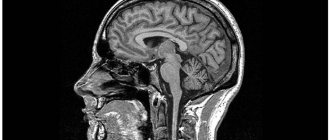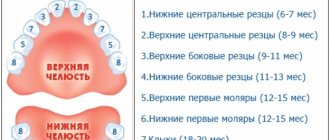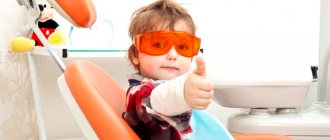History of creation | Working principle | Fixing the system | Withdrawal | Types of braces | Treatment phases | Photos of teeth before and after | Duration of treatment | Brushing teeth with braces | Addictive | Cost of treatment
Braces are a non-removable orthodontic device for the treatment of dental anomalies. Orthodontic treatment is a slow and complex process. The force is created by a metal arc installed in the grooves of the braces. Work productivity increases if the doctor and patient find each other. The design of the bracket system, the doctor’s experience and the patient’s responsibility lead to correct occlusion and stable results.
The material was verified by Anna Rimkevich, senior product manager at Ormco Russia.
A brace system is a tool for correcting a bite in the hands of an orthodontist. Teeth move under the influence of a constant weak force. To speed up the movement of teeth, the doctor uses additional elements: springs, chains, bite pads and elastic rods. After completion of treatment, a correct bite and an aesthetic smile will delight the patient for many years.
The result of orthodontic treatment
The goal of treatment with braces is to form the correct closure of teeth in the sagittal, vertical and transversal planes. In 1972, physician Lawrence Andrews formulated six keys to optimal occlusion in the permanent dentition. When correcting incorrect position of teeth and correcting the relationship between the upper and lower jaw, orthodontists of the 21st century are guided by the signs identified by the researcher:
- fissure-tubercle contact of the molars of the upper and lower jaws;
- crown angulation;
- crown inclination;
- lack of tooth rotation;
- tight approximal contacts;
- parallelism of the occlusal plane of the upper and lower jaw to the true horizontal.
The orthodontist forms the correct occlusion, improves the torque of the teeth and the exposure of the incisors. As a result of treatment, the doctor expands the dentition and creates an ideal smile.
What is an ideal smile? When a person smiles, the anterior teeth, premolars, and mesial surfaces of the first molars are visible. The cutting edges of the incisors and canines of the upper jaw follow the contours of the lower lip and form the arch of the smile.
result of bite correction
Correction of specific bite pathologies
Bite defects come in different forms; some pathologies are so complex that they can only be cured through surgery. In most situations, such radical measures are not needed; braces can successfully cope with them:
- Open bite. The pathology is complex and sometimes involves a combination of treatment with braces and surgical methods. It often happens on the front teeth, when when the jaws close, a gap forms between them. It can be most effectively corrected in childhood.
- Deep bite. In this case, we are talking about a situation where the upper part of the jaw, after closing, covers the lower part, which provokes abrasion of the enamel. It is treated with the help of special pads on the lower row, and when they are removed, staples with orthoelastics are placed to improve contact.
- Crossbite. Rarely encountered, it represents a crossing of the jaws when closing. Installation of braces most often becomes possible only after surgical removal of part of the teeth.
- Mesial bite. With this anomaly, the lower jaw is pushed forward relative to the upper, which seriously impairs diction. Simple pathologies can be corrected with braces, but in more complex situations the intervention of a surgeon is necessary.
- Distal bite. Now the upper part protrudes above the lower part, and here it is also often necessary to raise the question of performing an operation.
- Diastemas and trema. Diastema is the pathology of the two front teeth in the upper row, when the interdental gap can reach 5 - 6 millimeters. Trema is a similar picture, but applies to any other teeth except those mentioned above. This unpleasant situation can be corrected with braces, crowns or veneers.
- Crowded teeth. A very common problem, the elimination of which can take about six months, but this is only in the simplest situations. It is often necessary to remove some teeth, primarily wisdom teeth.
You should not be afraid of installing braces; such designs can successfully and fairly quickly eliminate most orthodontic problems.
History of the creation of braces
Doctors of the ancient world of the 9th - 6th centuries BC straightened teeth using improvised devices. In 1728, surgeon Pierre Fauchard published a study, one chapter of which was devoted to orthodontics. In the 9th century, the American Edward Engle created the first prototype of the braces system. The scientist invented four devices:
- E-arc gold alloy;
- modification of the E-arch with pins and tubes;
- ribbon arc;
- edgewise braces.
The operating principle of the structures underlies the operation of 21st century braces.
The E-arch, which expands the dentition, was made of a gold alloy and fixed into rings installed on the molars. Each tooth was tied to an arch with wire. Subsequently, Engle refined the design: adjustable tubes appeared on each tooth and pins on the arch. The pins fixed the arch into the slots, the doctor adjusted the pins, and the teeth moved. The system was not actively used in clinical practice, and the E-arm remained an intermediate option.
Later, an American scientist created a ribbon arch. Engle replaced the tube design on each tooth with a vertical rectangular groove. The crowns of the teeth tilted under the influence of the arc, but the roots remained in place. The limitation in the width of the groove and the low elasticity of the arc did not allow the torque to be controlled.
In 1928, Edward Engle designed the edgewise braces system. The scientist compared the geometry of the groove and the arc and replaced the ribbon arc with a rectangular wire. Engle established the slot size of 0.022 x 0.028 inches, which is what 21st century orthodontists use.
Edgewise braces were not wide enough to rotate the tooth under the force of the archwire. To achieve the result, orthodontists installed two braces on the tooth at once. The design formed the basis of ligature systems. With the development of orthodontics at the beginning of the 20th century, the gold alloy from which the arch was made was replaced by stainless steel. The increased rigidity of the steel compensated for the reduced arc thickness. A groove size of 0.018 x 0.025 inches has appeared, which, along with 0.022 x 0.28, is used in practice by orthodontists.
Damon Clear with arc
What it is?
Braces are essentially just that part of the bracket system that is attached to the tooth, a bracket for attaching a steel arch (wire). In addition to auxiliary fittings (springs, ligatures, rings) for fixing and tensioning the wire, a bracket system is formed.
The sooner you see an orthodontist, the better, but there is no age limit for use.
The essence of braces is to correct bite defects that lead to wear and destruction of tooth enamel, the appearance of caries and a decrease in aesthetic perception:
- protruding lower or upper jaw,
- uneven overlap,
- curvature of the dentition.
How do braces work?
The system consists of brackets fixed to the teeth, into the groove of which an orthodontic arch is inserted, and additional elements. On the sixth and seventh teeth, the doctor installs buccal tubes to secure the ends of the arch. The force on the tooth depends on the rigidity of the arch and the position of the arch in the bracket groove, the use of additional metal and elastic elements:
- metal ligatures;
- chains;
- springs;
- bite pads made of composite material or bite braces;
- buttons;
- hooks;
- additional arcs;
- elastics.
Damon Q2 with hook
Metal ligatures press the archwire tightly against the bracket, and springs and elastic chains create the force to move individual teeth. Using additional elements of the system, the doctor controls the impact on each tooth.
The arc straightens and pulls the bracket, the force is transmitted to the tooth and causes a process of aseptic inflammation in the surrounding tissues. Osteoclast cells destroy bone at the junction of the root and the alveolar wall. On the other side of the tooth, osteoblast cells synthesize new bone tissue. The balance of osteoblast and osteoclast activity ensures natural tooth movement. Braces direct and accelerate the physiological effect of the force of the arc and additional elements.
arc in groove Damon Q2
The operating principles of self-ligating and ligature systems differ. Self-ligating passive braces provide physiologically adequate force to move teeth due to low friction of the archwire in the closed space of the groove. In self-ligating braces with an active type of ligation, the clip and the arch press against each other. In classic ligature braces, the arch is held tightly in the groove by elastic or metal ligatures.
Fixing the system
Before installing braces, the orthodontist conducts a diagnosis and agrees on a treatment plan. The doctor refers the patient to professional oral hygiene. The procedure is necessary to keep the enamel under the braces intact.
The doctor treats the area of fixation with orthophosphoric acid and applies a primer. The primer contains fluorine compounds that penetrate the enamel. Fluorine molecules are embedded in the crystal lattice of hydroxyapatite enamel and reduce permeability to carious bacteria. Before fixation, the doctor applies light-curing materials, for example Blugloo, Grengloo, Enlight, to the base of the bracket.
Fixation methods
The doctor fixes the braces directly or indirectly. Regardless of the method, installation is painless for the patient.
In the case of the direct method, the orthodontist positions each bracket according to anatomical landmarks, the projection of the root in the bone tissue and the inclination of the tooth manually. Next, the material is illuminated with a polymerization lamp. The patient spends 30 to 50 minutes in the chair.
With the indirect fixation method, the manipulation takes 10–15 minutes and does not cause discomfort to the patient. The procedure consists of several stages:
- The orthodontist manually positions each bracket on plaster models of the jaws;
- transfers braces to a silicone tray;
- applies adhesive to braces;
- During the visit, he moves the elements of the system from the tray onto the prepared enamel and illuminates it with a polymerization lamp.
Fixation of the structure is a key stage of treatment, regardless of the method used. The orthodontist adjusts the width of the teeth and creates an aesthetic smile arch through the correct positioning of each element of the system. Braces work out torque, rotation and angulation. The doctor installs the arc into the slots and releases the patient until the next activation.
Removing braces
After completion of treatment, the long-awaited moment comes - removal of braces. Using special atraumatic forceps, the orthodontist peels off the bracket from each tooth with one movement of his hand. The patient hears a click and the bracket painlessly moves away from the enamel surface.
Next, the doctor grinds off the remaining glue and polishes the enamel to return the tooth to its original appearance. Grengloo bracket bonding material reduces the excessive impact of rotating instruments during polishing: removing adhesive from the tooth surface does not cause additional damage to the enamel. When there is no green material left, the enamel surface is cleaned.
Doctors from the Department of Orthodontics at the Tabriz University of Medical Sciences in Iran conducted a study and compared the differences in enamel damage after removing two brace designs - with a mesh-type base and with posts.
Researchers have scientifically substantiated the influence of the design of the bracket base on the adhesion strength to the enamel. According to the results of a study by orthodontists, at the base with columns the degree of adhesion to the enamel is higher. At the same time, braces with a mesh base cause less damage to the enamel when removed.
Doctors of the 21st century prefer systems with a mesh base to reduce the number of enamel microcracks during debonding. An example is the Damon Q and Damon Q2 self-ligating braces and the Mini Diamond ligature systems. Ormco's patented bracket base treatment makes removal safe for the enamel.
Damon Q2 with mesh base
Retention period
To prevent the teeth from returning to their previous position, the result must be recorded. To do this, instead of braces, wires - retainers - are installed on the teeth. They are placed on the inner surface of the teeth, they are invisible and do not cause any inconvenience to the patient.
How much will the final stage cost:
- installation and fixation of a retainer – 7,000 rubles;
- production of night guards, annual preventive examination by an orthodontist - the cost may vary.
Although at first glance, correction with braces may seem quite expensive, you should not skimp on designs and choose the most budget-friendly options. The speed of bite correction, patient comfort, and the final result depend on which type of system to choose.
Types of braces
The structures are classified according to the material of manufacture, location in the oral cavity and type of arch fixation. Here are examples of each type of braces.
Material of manufacture
1. Metal braces . Self-ligating Damon Q and Damon Q2 are made from 17-4 stainless steel alloy. In addition to orthodontic products, the high-strength alloy is used in the aviation and chemical industries. An example of metal ligature braces is Mini Diamond and Orthos.
Damon Q2 with lid open
Mini Diamond model
2. Devices made of bioinert titanium alloy . This material is chosen if the patient is allergic to nickel or chromium. An example is the classic Titanium Orthos braces.
3. Ceramic systems . Damon Clear/Clear2 translucent braces are made from durable polycrystalline aluminum oxide (PCA). The period of adaptation to foreign structures in the oral cavity increases, since Damon Clear is larger than metal Damon Q.
translucent Damon Clear
4. Braces made from artificially grown sapphire . Inspire Ice transparent ligature devices have durable wings that do not break off under stress.
transparent ligature Inspire Ice
Location in the oral cavity
The orthodontist fixes the braces vestibularly or lingually. For vestibular localization, the elements are glued to the visible part of the teeth. An example is Damon self-ligating braces. Lingual systems are installed on the dentition from the tongue side, the design is invisible to others. The adaptation period to internal braces is longer than to vestibular systems: it is not easy for the tongue to get used to a foreign structure in the oral cavity. An example is STb braces. Due to the fact that the bases of the braces are made individually according to exact impressions of the jaw, the cost of lingual systems is higher.
vestibular ligature braces Mini Diamond on typodont
Arc fixation type
The arch is attached to classic edgewise braces with elastic and metal ligatures. Ligature braces correct the position of individual teeth and correct complex dental anomalies. The ligatures press the arc tightly against the groove, increasing friction in the system. Example – Mini Diamond and Orthos.
ligature Orthos made of metal
Self-ligating brackets hold the archwire without ligatures: the cover of the structure closes and closes the groove space. In devices with a passive type of ligation, the groove does not interfere with the movement of the arc, the cover is motionless, the arc slides without obstacles, and friction in the system is minimal. The Damon Q and Damon Q2 systems work out the parameters embedded in the braces and start the physiological process of moving teeth.
closed Daimon Q
In active self-ligating structures, the clip puts pressure on the archwire and has a mechanical effect on the entire system. Teeth move in an adequate force zone under the influence of load vectors.
Final tables comparing types of structures
To understand which braces are best to install for defects in the dental system, we suggest that you familiarize yourself with the summary information presented below:
| Sign | Vestibular braces | Lingual braces |
| Efficacy of therapy | High | Sometimes it works more effectively, in other clinical cases it does not have a sufficient effect |
| Duration of treatment, years | 1,5-2 | 2-3 |
| Design reliability | Excellent durability | Sensitivity to external influences |
| Popularity | Very popular | Installed less frequently due to unattractive cost |
| Aesthetic component | Low or medium | Invisible to others even with a wide smile |
| Difficulty of fixation | Not difficult | Quite difficult to attach |
| Hygienic care | Standard Procedures | Very difficult to care for |
| Adaptation period | Just a few weeks | Long, up to 3 months or more, sometimes patients never get used to the accessory |
| Wearing comfort | Doesn't cause discomfort | Inconvenient |
| Presence of pain | Minor soreness | Hurt |
Comparative analysis of accessories made from various materials:
| Characteristic | Metal braces | Ceramic systems | ||
| Classic | Self-ligating | Classic | Self-ligating | |
| Visibility | Visible due to contrast with enamel | Hidden | Barely distinguishable | Hidden behind teeth |
| Cost, thousand rubles* | from 80 000 | from 110 000 | ||
| Result in severe cases | Highly effective for seemingly hopeless deformities | Effective for most problems | Coping with advanced pathologies | |
| Convenience | Affects soft tissues | Injures the mucous membranes and tongue, causing diction problems | Rub during the first week of wearing | After the adaptation period, wounds can be avoided if you are careful |
| Hygiene | Difficult to clean | Cleans quickly, but is fragile and requires careful handling | ||
| Main disadvantage | Noticeable when communicating | Expensive | ||
*To get accurate prices for different types of turnkey correction, go to the Dentics website, or better yet, make an appointment and find out from the orthodontist personally which option is right for you.
Which braces are more profitable to install?
Self-ligating and ligature braces correct the bite and correct complex dental anomalies. Non-ligating systems are more expensive, but the installation of self-ligating structures reduces the number of visits to the clinic. At a lower price for edgewise braces, the patient visits the orthodontist an average of 24 times during treatment, 2.5 – 3 years. When installing self-ligating systems, approximately 12 visits to the doctor are required. The course lasts from 1 to 2.5 years.
Clinic management is often not ready to purchase expensive systems and pay for additional training for orthodontists. Doctor A.V. Tikhonov economically substantiated the advantages of installing ligature-free braces. The orthodontist compared the rate of arch replacement during activation of self-ligating structures and traditional models with ligatures. On average, removing and installing the arch takes 8 minutes. 14 sec. on classic systems and 1 min. 21 sec. – on self-ligating ones. Usually the arches are changed on the upper and lower jaws - the duration of the manipulation is doubled.
treatment on Damon Q2
According to the researcher, taking into account the reduction in treatment time and the number of visits to the doctor, ligature-free braces are more economical for the clinic and the patient. The ergonomics of working with the ecosystem of Damon braces and additional elements reduces the appointment time and the total financial costs of the person visiting the clinic.
People around you start to envy you kindly
Not many people can boast of a perfect smile, but only a few take on this problem. However, braces on an adult are causing others to think about going to the dentist again. Yes, people around you will pay attention to you more often; friends and acquaintances will begin to be interested in the details of the treatment, the sensations, and the cost of the design. One thing is for sure - they will respect you, because you care about your health and did what many do not dare to do. In addition, not everyone is ready to shell out more than 100 thousand rubles to correct their smile.
Phases of orthodontic treatment
Orthodontic treatment consists of four stages:
- leveling;
- basic mechanics stage;
- detailing and completion;
- retention.
Leveling
After fixing the braces, the leveling stage begins: the doctor installs round arches. The sequence of arch replacement is standard; if necessary, the orthodontist adjusts or supplements the protocol.
Protocol for replacing wires during treatment with Damon:
- 0.014″ CuNiTi – 10 – 12 weeks;
- 0.016″ CuNiTi – 6 – 8 weeks (intermediate arc if necessary)
- 0.014x0.025″ CuNiTi – 10 – 12 weeks;
- 0.018x0.025″ CuNiTi – 4 – 6 weeks;
- 0.019x0.025″ TMA or SS.
arc in groove Damon Q
0.013″ wires are typically used for severely crowded teeth. The higher the degree of crowding, the more difficult it is to install the arch into each groove. For moderate to mild crowding, the doctor begins treatment with an arc with a cross-section of 0.014″.
Round arches of low rigidity are made from a thermoactive nickel-titanium alloy with the addition of copper. The temperature of the oral cavity activates the physical properties of the metal, and the arc straightens to its original state. The doctor changes the arches in accordance with the treatment protocol. Thanks to the initial arches of low rigidity, the alignment of the dentition occurs, the rotation and position of individual teeth are corrected.
Correctly selected braces torque at the beginning of treatment reduces the number of visits at the final stage.
Basic Mechanics
After the leveling stage, the doctor installs rectangular arches. CuNiTi arches with a cross section of 0.014″, 0.016″ and 0.014x0.025″ are used to completely correct tooth rotations, begin to practice angulation and torque, and create the shape of the dentition. Steel, TMA and nitinol rectangular archwires are used to stabilize the dentition, close spaces, control torque, angulation and rotation.
girl with Damon Clear
During the basic mechanics phase, the doctor sometimes needs to re-bond the braces. This is a standard manipulation that does not cause any difficulties for the orthodontist. The position of the teeth and the vector of force application change, the doctor re-fixes the braces so that the teeth move in the right direction. At this stage, a complex change in the bite occurs; the doctor prescribes elastics. The doctor bends the arches, closes the interdental spaces, makes occlusal linings made of composite material, secures the hooks and installs microscrews.
Final stage
At the final stage, the doctor carries out the details: corrects the position of individual teeth, bends the arches and re-prescribes the scheme for wearing elastics. At the final stage, the doctor uses rectangular TMA 0.019x0.025″ archwires to create detailed bends and then softly transition to 0.019x0.025″ steel archwires, if necessary. A large selection of Damon torque options due to the implementation of the braces prescription allows the doctor to reduce the number of bends on the arches. The orthodontist corrects torque: the vestibulo-oral inclination of the tooth in the sagittal plane. Steel arches with a cross section of 0.019x0.025″ fill the groove, and the bracket fulfills the parameters laid down in the groove.
Retention period
To consolidate the results of orthodontic treatment, the doctor installs a retainer - a metal wire on the palatal and lingual surfaces of the anterior group of teeth. At the age of 25, the formation of the bones of the facial skeleton ends. Up to this age, patients wear a retainer twice as long as treatment with braces. After 25 years, a wire retainer is installed on both jaws for life. Regardless of age, doctors recommend wearing a transparent retention mouthguard at night. If the patient does not follow the doctor's recommendations during the retention period, the teeth may return to their original position.
How to choose a brace system
The primary task for the patient is to find a doctor with whom a trusting relationship will be established. The orthodontist will conduct a diagnosis, discuss a treatment plan and offer several braces to choose from. The doctor recommends braces based on the patient’s financial capabilities, the complexity of the clinical case and the anatomical features of the dentition. The decision-making is influenced by the doctor’s personal preferences - some specialists work only on self-ligating braces using the straight arch technique, others prefer a multi-loop arch and ligature structures.
young man with Ormco translucent self-ligating braces
Ceramic and sapphire systems are chosen to partially camouflage orthodontic treatment. Bite correction with clear braces takes longer than with metal Damon Q braces due to the higher friction of the archwire and ceramic groove bottom.
treatment with Inspire Ice
How do braces differ from each other?
| Type of braces | Materials | Differences | Price |
| Metal | metal alloy | reliable and cheap | from 50,000 rubles* |
| Ceramic | ceramics | the most inexpensive of aesthetic | from 70,000 rubles* |
| Sapphire | artificial sapphire | beautiful and relatively inexpensive | from 100,000 rubles* |
| Lingual | gold + metal | completely invisible | From 150,000 rubles* |
*Prices are indicative in Moscow and only for the bracket system.
Photos of teeth before and after braces
Trust in a doctor consists of many factors: reviews and recommendations from friends, a well-conducted consultation, doctor’s certificates, diplomas and awards, photos of clinical cases “before” and “after” of treatment with braces published on the Internet. Doctors actively maintain groups on social networks and blogs on clinic websites, post videos on YouTube, and post photographs with the results of orthodontic treatment.
deep bite
high crowding, flat profile
moderate crowding, asymmetry
high degree of crowding, open bite, posterior crossbite
case without removal
bilateral crossbite with a high degree of crowding of the anterior group of teeth in the upper jaw
Alternative to treatment with braces
An alternative to braces is aligners. Transparent hard aligners are used to move teeth in cases where the patient has increased aesthetic requirements. The aligners are made in the laboratory on a 3D printer based on an impression of the jaws. Patients change aligners in the order specified by the doctor. The disadvantage of aligners is the high cost of treatment, but the advantage is the aesthetic component: the aligners are invisible to others. Treatment with aligners takes longer and is suitable for clinical cases of mild to moderate complexity.
The doctor attaches attachments made of composite material to the teeth, on which the mouth guard presses. The teeth move slowly; halfway through the treatment, the orthodontist takes an impression of the jaw and sends it to the laboratory to make new aligners.
Operating principle
Structurally, braces are a rather complex technical system. Each tooth has its own bracket, and then they are all connected using an arch made of a special alloy. A distinctive feature of such an arch is that it is able to move and return to a given shape, which corresponds to the correct bite. Moving in a certain direction, the arch sets the teeth in motion, which move to where it is needed. The pressure force and arch rigidity required are not the same, so during the treatment process the orthodontist adjusts these parameters to achieve the desired effect. You can learn more about who an orthodontist is here. How often the rigidity of the arch should be changed is decided only by the doctor, who must take into account such parameters as the complexity of the pathology and the type of orthodontic structure.
Partial bracket system
For children in the period of changing temporary teeth to permanent ones, a “2 by 4” system is installed. Braces are fixed on four incisors and two molars. The design is used to close large interdental spaces when there is insufficient space for permanent teeth, early removal of temporary teeth to save space. Often, a 2-by-4 system prepares a child for primary orthodontic treatment with a full brace system. Braces are fixed at 6–7 years of age, when the first permanent molars erupt.
There is no age limit for orthodontic treatment. At any age, braces are firmly fixed to the enamel, and teeth move. Implants or ankylosed teeth in the mouth serve as support and do not move or participate in orthodontic treatment.
Duration of treatment
How long do you wear braces? Treatment with ligature structures averages 2.5 – 3 years. Self-ligating devices are usually worn for 1 – 2.5 years. The duration of treatment depends on the model of braces, the experience of the doctor, the complexity of the clinical case and cooperation with the patient. If you do not wear elastics and do not follow the orthodontist's recommendations, treatment will slow down.
girl with Mini Diamond metal braces
The patient comes to the appointment with the regularity specified by the doctor. At the initial stage of treatment with a self-ligating brace system, the intervals between visits are 8 – 10 weeks. During the basic mechanics phase, the patient visits the orthodontist every month. When installing ligature structures, he comes for activation at least once a month at each stage of treatment.
teenagers with Ormco braces
Reviews
Angelina, 26 years old
For a long time I did not decide to install braces, I was afraid that they would be conspicuous and spoil my appearance. In the end, I succumbed to the persuasion of my doctor and went to install braces. At her suggestion, they took a picture of my teeth before installation, for which she is now very grateful, because when she removed the structure a year and a half later, I was amazed at the difference and was completely satisfied with the result.
Tatyana, 28 years old
I got braces quite late, at 26 years old. I was tormented by doubts for a long time, I was afraid that a smile with braces would look terrible, moreover, I even got to the point where I was worried about the final result of the treatment. Having overcome all my fears, I can say that I did everything right and am completely satisfied with the result. Thanks to ceramics, the braces were not too noticeable, and the most important thing is that now I have beautiful and straight teeth and can smile without worrying at all.
Christina, 31 years old
As a teenager, my parents tried to convince me to get braces, but to no avail, I was terribly afraid of it and threw real hysterics, forcing them to back down. As an adult, I myself came to the understanding that I couldn’t do without installing the system, so I had to go to the orthodontist at the age of 28, which is already a considerable age for such an operation. I wore braces for two years, took them off and was delighted with the results. Now I wear retainers and want to fix it, because I categorically do not want to return to crooked and uneven teeth.
How to brush teeth with braces
Regardless of the type of braces and the number of visits to the clinic, a person needs to carefully monitor their oral hygiene. Orthodontic patients follow a diet. Doctors recommend eliminating sticky foods: toffee, halva, nougat, chips, chewing gum, consuming with caution and cutting hard vegetables and fruits into pieces. It is not recommended to drink coffee, red wine and other drinks with dyes. Orthodontists advise avoiding cold or very hot foods: sudden temperature changes damage metal and sensitive ceramics in the oral cavity.
With braces, brushing your teeth becomes more difficult. Using circular movements of an orthodontic toothbrush, the patient removes food debris and plaque from the vestibular surface of the teeth and the space around the bracket. The internal and chewing surfaces are cleaned with a manual toothbrush. The space around the braces and in hard-to-reach places is cleaned with a monotuft brush and dental brushes. Doctors advise using superfloss and irrigator.
It is necessary to brush your teeth three times a day after meals and perform professional oral hygiene in the clinic every 2 to 4 months. By following the doctor's recommendations and maintaining oral hygiene, the patient speeds up treatment.
Braces do not damage the enamel; caries occurs as a result of poor hygiene. The intensity of plaque depends on the type and size of the structure, but the main factor is the patient’s willingness to brush their teeth thoroughly and regularly. Caring for the oral cavity with small self-ligating appliances is easier than with ligature structures. Food remains under elastic and metal ligatures, which leads to the formation of caries.
How do girls transform?
It is no secret that it is the fair half of humanity that is most concerned with issues of their own appearance, so even small defects can be perceived as a tragedy on a universal scale, no less. What can we say about such troubles as protruding fangs, a protruding jaw or crooked teeth. Many girls demonstrate determination in terms of combating such defects, but only until the stage of choosing treatment options. Often they are afraid of the need to wear braces for a long time and the result obtained afterward is not always the motive that helps them overcome such fears.
It is worth saying that many men find girls with braces cute; they perceive these structures in a completely different way than the fair sex sees them. In addition, it should be added that the achievements of modern dentistry allow us to take a fresh look at the aesthetic component of the process of wearing braces. Metal has long been no longer the only and unalternative option; today, ceramic, plastic and sapphire systems, which are much less noticeable on human teeth, are widely used. In addition, there are also lingual braces that are installed on the inside of the jaw, which makes them completely invisible to others.
A way out can be found in almost any situation, and aesthetics should not become an obstacle to getting rid of malocclusions.
Getting used to braces
The patient gets used to the braces system in the mouth within a couple of weeks. When the physiological movement of teeth begins, people experience discomfort due to aseptic inflammation of the bone. Patients with self-ligating braces stop feeling pain after a couple of days; when installing ligature structures, the discomfort goes away on the sixth day. The level of discomfort is influenced by the pain threshold, which is individual for each person.
Sometimes, at the initial stage of treatment, nitinol round wires cause discomfort. A glass of cold water relieves discomfort. Due to the physical properties of the thermal activity of the metal, the tension decreases and the discomfort goes away.
The metal of nitinol arcs is in one of two phases. When the temperature changes, the crystal lattice of the alloy changes from the martensite state to the austenite state and back. The doctor inserts a thermoactive arc into the grooves of the braces; under the influence of the temperature of the oral cavity, the arc straightens and gently pulls the teeth along with it. If the discomfort persists for a long time, the doctor prescribes painkillers to the patient.
Treatment with braces during pregnancy
Pregnancy is not a contraindication for treatment. During pregnancy, women take vitamins that support bone health. Metabolic processes in a woman’s body accelerate, and teeth move faster. Before installing braces, the orthodontist sends the patient for sanitation and professional oral hygiene. To strengthen the enamel, remineralizing therapy is carried out.
Pregnant women, unlike other patients, do not take painkillers to overcome discomfort during tooth movement at the leveling stage. During pregnancy, women often suffer from gingivitis and bleeding gums. Diseases complicate hygiene and are relative contraindications to orthodontic treatment. Sometimes, in order to avoid possible risks, bite correction is postponed until after the birth of the child.
The most difficult period is the first 2–3 weeks
Correction of orthodontic defects is based on the use of natural processes occurring in the body. The first evidence of the beginning of correction is the so-called dissociation of the bite, when the dental ligaments and bone tissue are forced, under the influence of the orthodontic arch, to begin to work in a new way.
This process can become very unpleasant for an unprepared patient: during the first few days, the closing of the jaws completely disappears, muscles begin to ache, and constant aching pain in the teeth appears and increases. If you are not used to it, braces can rub your cheek, tongue or gums, and in some cases, gum inflammation can even occur.
In fact, such a shock state of the dental system serves as excellent confirmation that the process has begun. But there can be no talk of a visual effect in the first few weeks of treatment.
Removing teeth before installing braces
Sometimes, according to the orthodontist, it is necessary to remove teeth to make room for dentition correction and improve the facial profile. The orthodontist makes the decision about removal after diagnosis and discussion of the treatment plan with the patient. Photometric analysis of the face, examination of X-ray images and diagnostic results help the doctor make the right conclusion.
The complexity of the clinical case affects the need for removal. The choice of prescription in Damon braces in some cases allows you not to remove teeth. To achieve correct occlusion without tooth extraction, the doctor corrects the bite, installs microscrews and performs separation.
How much do braces cost with installation?
Orthodontic clinics use different pricing policies. Pricing is based on the composition of the service and the frequency of payments. In some orthodontic centers, the cost of treatment includes the price of braces, while in others they pay for the system separately.
treatment on the Orthos design
There is an option for a one-time payment for the course of treatment and a scenario in which the patient pays monthly for system activation. For the patient, from the point of view of economic justification, full payment is more profitable, since the final price is not affected by fluctuations in the ruble exchange rate and changes in the price list in the clinic.
The cost of activation of ligature and self-ligating braces is approximately the same. Payment for treatment using classical systems with ligatures consists of 24 visits to the doctor and the relatively low price of the structure. Self-ligating devices are more expensive, but require the patient to go to the clinic only 12 times. Convenience of design, reduction of treatment time, the number of visits to the doctor and the time that the patient spends in the orthodontist’s chair give self-ligating devices qualitative advantages.
The cost of the course is determined by the orthodontist after diagnosis and drawing up a treatment plan.
Head of the St. Petersburg clinic “Full Order”, candidate of medical sciences Tikhonova A.V. compared the effectiveness of treatment under the scheme with a one-time payment “All inclusive” and with payment by visits.
We provide an approximate comparison of ergonomics and financial efficiency of treatment for various price options. Prices are set hypothetically, taking into account the estimated average market prices for St. Petersburg at the time of publication of the manual.
information from the book “Myths about the Damon system” by orthodontist A.V. Tikhonov
The results of the study indicate that the all-inclusive one-time payment scheme is preferable for the doctor and the patient. Payment for results allows a competent orthodontist to quickly complete treatment and increase the profitability of the practice, and the patient to receive a beautiful and healthy smile earlier.
perfect smile with Inspire Ice
What can be achieved?
Many people think that after undergoing a course of treatment with braces, a person only gets straight teeth that look beautiful and natural . This is true, however, this is only part of what such orthodontic devices can provide.
First of all, chewing function is restored, which is more important than even the external beauty of the teeth. After all, chewing is the first stage in the digestion and assimilation of food.
It also eliminates the possibility of problems with the joint connecting the jaws. In addition to the alignment of the teeth themselves and their rows, the face changes, the lines become more regular and attractive.
All this relieves the patient from many psychological problems and complexes that arise due to malocclusions and pathologies.
How to get a tax deduction for treatment with braces
For three years, Russian tax residents can claim a tax deduction for treatment with braces. Taxpayers receive a refund from the state in the amount of 13% of the amount spent on their own treatment, treatment of minor children, parents or spouses. Only the personal income tax that the taxpayer paid to the state for the last year is returned.
Package of documents for the tax office:
- declaration 3-NDFL;
- certificate from place of work 2-NDFL;
- documents from the clinic - a copy of the treatment agreement, a copy of the clinic’s license, a certificate of payment for treatment, cash receipts.
A person who has undergone orthodontic treatment and is claiming a refund must file a tax return by the end of April.
The state returns 13% of the maximum 120,000 - 15,600 rubles. The material is for informational purposes only and is presented for informational purposes. It does not replace consultation with an orthodontist and is not a guide to correcting dental anomalies.











